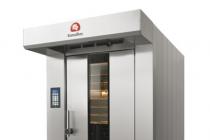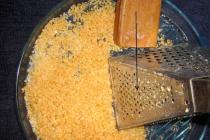Stay at the cottage or in a country house in winter period should be comfortable and convenient. Therefore, you should take care of high-quality heating. Among other heating devices available to modern consumers, it is especially worth highlighting infrared lamps for heating. They will be discussed further in the material.
Although infrared heaters were developed and began to be used at the end of the 20th century, they have been appreciated only very recently. Currently, heating lamps are actively used for heating small-sized rooms, although they are not suitable for heating the whole house.
What are space heating lamps
Infrared lamps for space heating are in high demand both for use in commercial premises and in private residential buildings. They are able to replace traditional, bulky and non-mobile devices that run on solid fuel or gas. By appearance infrared heaters resemble ordinary light bulbs, the difference is only in their high heat output and color - white or red.
In fact, this is a lamp with a bulb filled with a mixture of argon and nitrogen, in which a tungsten filament is placed. The cartridge for it is set to a standard size E27, but only from ceramics - plastic will not withstand high temperatures.

You can buy such heating lamps both assembled inside the finished device, and separately. The inside of a ceiling lamp in a heater is usually mirrored to reflect heat waves towards the room.
Characteristics
The main characteristics of infrared lamps are as follows:
- incandescent temperature - 600 ℃;
- maximum operating power - 500 W;
- mains voltage - 220 V;
- range of infrared waves - up to 5 microns;
- service life - up to 6000 hours.
When choosing IKZK lamps for heating in the house, their number should be calculated based on the power rate of 1 kW per 10 m 2. This standard applies to insulated rooms with plastic double-glazed windows, as well as with insulation laid along the floor, ceiling and doorway. If there are uninsulated places in the room through which cold can penetrate into the room, you will have to increase the number of heating devices or their power.
Pros and cons of red heat lamps
Heating devices with infrared lamps are quite in demand among consumers, especially if there is no opportunity, time or desire to build something larger and more permanent. Therefore, such heating lamps are very often bought by owners of cottages and country houses.
Consider the main advantages of this type of heating devices:
- thermal lamps for heating do not burn oxygen during operation and do not evaporate moisture from the air, unlike other portable devices;
- during the operation of infrared heaters, convective air flows do not occur, which provides residents with a comfortable microclimate;
- the use of ceiling lamps for heating of the PLEN type can significantly save the useful area of \u200b\u200bthe room and ensure sufficient efficiency;
- heating devices do not create any noise and are absolutely non-toxic;
- the installation of such equipment is financially beneficial and allows you to effectively heat a certain area of \u200b\u200bthe room;
- there are no additional costs for the purchase of fuel materials, so that heating costs are reduced by about 60%;
- the service life of infrared heaters of the film type is about 30 years and even more;
- since the operation of the space heating lamp is not associated with the combustion of fuel materials, they do not emit any combustion products, therefore, additional ventilation in the room is not required;
- heaters with infrared lamps are not afraid of power surges or power outages, they still remain operational;
- in order to avoid damage due to overloads or overheating (the body of the device does not heat up more than 38 ℃), heaters are usually equipped with a protective mechanism;
- such lamps do not cause fires, and the possibility of receiving electric shocks is excluded;
- the use of equipment from this group is very convenient because they can be left on even if no one is in the house, while the necessary microclimate will be maintained in the room and you can not be afraid of fires or accidents;
- the power of infrared lamps is quite enough to heat even rather large rooms with high quality, providing optimal living conditions. The only thing you should choose the required number of lamps, based on the size of the room.

It is noteworthy that according to medical research, infrared radiation has a general strengthening effect on a person, so the presence of such devices in an apartment to some extent contributes to the improvement of the body.
Like any other electrical device, an IR heating lamp creates an electromagnetic field, but it is so insignificant that it is not worth attention. But the convenience of installing such equipment can be safely written as a plus.
Models of infrared heaters are available for sale, which can work autonomously and are easily programmed. For example, if you want an infrared lamp to heat a room to a certain temperature, and only while you are in it, it is enough to set the appropriate program, and the equipment will turn off at the specified time. In addition, such devices are able to remember the entered parameters, so you do not have to set them again.
Among the minuses, one can name only one circumstance that can become an obstacle to the use of infrared radiation lamps for space heating. We are talking about the presence and constancy of the supply of electricity in the house. Nevertheless, there is always a way out of the situation - the devices can be connected to a charged battery or an uninterruptible power supply, which will ensure the operation of the equipment for the required time. True, in order to avoid surprises, it is worth monitoring the charge level and the operating condition of the equipment.
The principle of operation of heaters with infrared radiation
A feature of equipment with IR lamps is that the thermal energy emitted by them is transferred to the surfaces of objects or people in the room, and is not absorbed by the air. This is the main difference between such devices and conventional electric heaters. Heating of objects is carried out only in the field of influence of lamps. Thus, heat accumulates in solid objects, such as walls, furniture, and then is transferred to the room and warms the air.
As already mentioned, a red heating lamp emits heat waves only in the area to which it is directed. As a result, only local heating occurs.

Some consumers mistakenly believe that heating with infrared lamps is only advisable in industrial premises or office buildings, while their use at home is not so effective and therefore not justified. However, it turns out that in comparison with traditional radiator batteries, convectors or oil heaters, heating with incandescent lamps is more efficient and economical. Their operation does not require a supply of fuel, and they consume much less electricity.
A variety of models of heaters with infrared lamps allows you to conveniently place them in any room. Such devices are compact and do not take up much space. A very convenient option for placing IR heaters will be mounting under the ceiling - so they can cover a large area. Thanks to modern technologies, manufacturers produce such devices that can be easily built into the ceiling - this approach allows not only to effectively heat the room, but also harmoniously fit into the interior design.
Film-type infrared heating (PLEN)
Another type of heaters with infrared radiation is a film resistive foil sheet. It is known to many consumers as an infrared heat-insulated floor. Although in most cases such a film fits under the floor finish, as an option, it can be placed all over the ceiling or on the walls.
Film-type heating systems have one feature of installation - they should not be placed on top of walls or ceilings, but between the finishing facing material and the thermal insulation layer.

Thanks to this approach, the use of film heating will be as efficient as possible and will reduce heat loss to a minimum. At the same time, the heating elements of the heating system will not be visible on the surface, so that the consumer can embody even the most daring design projects in his home, in which there is no place for traditional floor or pendant heaters.
Practice shows that the equipment of a residential building with infrared film heating devices helps to save electricity and financial resources of the consumer up to 40%.
We hope that the information provided on infrared light lamps for heating will be useful to the consumer, so that he will be able to independently determine the type and number of heating devices for his home.
Heating a poultry house in the winter season can be a very topical issue, especially when it comes to the northern regions. In some cases, the usual insulation of windows, doors and walls (for example, with mineral wool) is sufficient, but in others it is necessary to install heat sources that can warm chickens in the most severe frosts. One of the modern options for such equipment are infrared lamps, which have a number of advantages over alternative heaters. Let's take a closer look at the nuances of their use.
The principle of operation of the IR lamp
Few poultry farmers delve into the features of the structure and working principle of infrared lamps, however, this information will be useful to obtain the desired result. The working principle of such lighting elements is in many ways similar to the principle of operation of conventional incandescent lamps with a tungsten filament inside. However, unlike the latter, the bulb of the IR lamp is additionally filled with a gaseous mixture (usually argon or nitrogen), and to further increase the efficiency, its walls are made mirrored.  The mirror surface perfectly reflects light fluxes and acts as a reflector, and a special coating helps to focus heat on objects and objects that are close to the lamp. The concentration of heat fluxes on a particular surface significantly increases the intensity of its heating.
The mirror surface perfectly reflects light fluxes and acts as a reflector, and a special coating helps to focus heat on objects and objects that are close to the lamp. The concentration of heat fluxes on a particular surface significantly increases the intensity of its heating.
Did you know? People learned about the existence of infrared radiation as early as 1800, when the English astronomer W. Herschel was studying the characteristics of the Sun.
In total, there are three ranges of infrared radiation:
- shortwave characterized by an outgoing wavelength in the range of 780-1400 nm (such radiation is provided by lamps with a high color temperature, more than 2000 K and an efficiency of about 90-92%).
- medium wave- wavelength 1400-3000 nm (the standard color temperature in this case will be within 1300 K, therefore, when heated, IR radiation will partially go into the long wave range: efficiency - 60%).
- longwave- the thermal wave is in the range of 3000-10000 nm, and with a decrease in temperature values, the thermal infrared source reproduces only long waves (the efficiency is only 40%). Radiation long wave only possible when idle after switching on (for a few minutes).
 Such "skills" of IR heaters made them popular in different areas human life: at manufacturing enterprises, at home and, if necessary, solving farm problems, and in each of these cases it is possible to save up to 45% of energy.
Such "skills" of IR heaters made them popular in different areas human life: at manufacturing enterprises, at home and, if necessary, solving farm problems, and in each of these cases it is possible to save up to 45% of energy. Advantages and disadvantages of IR lamps
Any product has its own characteristics, and not always they are only positive. Consider the pros and cons of using IR lamps. Their advantages include:
- ease of installation and operation;
- high ratio useful action(heat is directed specifically to the object and is not dissipated in space);
- beneficial effect of radiation on the health of humans, animals and birds, with an increase in the protective functions of the body and the digestive capabilities of the gastrointestinal tract;
- the ability to install even in rooms with a high level of humidity;
- high level of environmental friendliness: infrared bulbs do not burn air and do not emit harmful gas fumes.
As for the disadvantages of IR lamps, among the main ones it is worth noting:
- relatively short term services;
- high cost (in comparison with the same incandescent lamps);
- strong heating of the working surface of the lamp heater, which is why during installation it is better to immediately supplement it with a thermostatic device (it is able to maintain the microclimate at the proper level).
 Many poultry farmers consider the disadvantages of using IR lamps not very significant and still install them in chicken coops, so let's determine the relevance of such a solution and the specifics of the task.
Many poultry farmers consider the disadvantages of using IR lamps not very significant and still install them in chicken coops, so let's determine the relevance of such a solution and the specifics of the task. Important! In any case, you should follow the instructions exactly, so if you have not encountered the use of IR lamps before, then it is better to take into account all their application features in advance, otherwise there is no point in discussing the disadvantages of using this heat source.
Profitability of IR lamps
When using IR lamps for heating a chicken coop, we can safely talk about their profitability, because even in the coldest winters they are able to provide decent heating for a room with a bird. This can be explained by the high value of efficiency, which can be obtained by transferring heat directly to the chickens and objects in the house, and not to the surrounding air. Under such conditions, not only the egg production of laying hens increases, but also the intensity of development of young birds increases.  If necessary, IR lamps can be used for spot heating (for example, a chicken coop area with small chickens), but even if you install several elements in the center of the ceiling, then you don’t have to worry about even heat distribution. To achieve this effect with the help of alternative heating sources, you will have to spend more electricity, and therefore money.
If necessary, IR lamps can be used for spot heating (for example, a chicken coop area with small chickens), but even if you install several elements in the center of the ceiling, then you don’t have to worry about even heat distribution. To achieve this effect with the help of alternative heating sources, you will have to spend more electricity, and therefore money.
How to place the lamp correctly
Only one IR lamp can cope with heating an area of 12 square meters. m, but in many respects its effectiveness will depend on the quality of the insulation of the chicken coop. On average, 250 W / h is enough to maintain a normal temperature, but if there are decent gaps in the windows and doors, then this value is definitely not enough.
The infrared luminous flux is distinguished by a clear direction of its impact, therefore, if it is necessary to dry the litter regularly, this nuance should also be taken into account (two bulbs can be fixed on the ceiling at once at a certain distance from each other).
The installation process of IR lamps looks like this:
- Introducing wiring with a suitable cross section into the chicken coop (it must be immediately placed in a protective corrugation).
- Marking the places of fastening of cartridges for lamps (at a distance of at least 1 m from each other).
- Fixing the cartridges into which the lamps will be screwed later (given that infrared light sources get very hot during operation, it is advisable to use ceramic cartridges for them).
- Screwing the IR lamps themselves and turning them on.
 IR lamps are always hung so that they cover the largest possible area of the chicken coop and do not come into contact with water, which, if hit pointwise, can disable them.
IR lamps are always hung so that they cover the largest possible area of the chicken coop and do not come into contact with water, which, if hit pointwise, can disable them. Important!If you decide to place them not on the ceiling, but in other places, you will have to create an additional fence that limits the direct contact of birds with thermal elements. For these purposes, a metal crate is suitable.
How to choose a lamp
In lighting equipment stores, you can choose a wide variety of options for IR lamps both in terms of design (the most popular are pear-shaped or with a flattened surface) and in terms of power characteristics. As for the latter indicator, it varies between 0.3-4.2 kW, and in order to maintain the optimum temperature inside the chicken coop, a heater power of 0.5 kW is enough, but if you install two such lamps, it will not be worse. You can also follow the above recommendations when 12 sq. m, it is recommended to use one IR lamp with a power of 250 W.
Other options for IR heaters
In addition to lamps, other types of IR heaters can be installed in chicken coops. 
All of them can be divided into three main groups:
- lamps;
- spotlights;
- ceiling lamps.
It is the latter that are more relevant in animal husbandry and can successfully perform their functions in poultry houses. If we are talking about linear infrared light sources, then among them there are three main types:
- with a ruby red tube (suitable for heating large rooms);
- with a quartz tube made of transparent glass (they do a good job of drying varnish and paint, and also help rid the room of harmful microorganisms);
- a tube with a golden coating (its use is relevant when it is necessary to heat warehouses and showrooms, where regulation of the brightness of the light flux is required).
Did you know?Even the highest quality and most powerful light bulbs are not as expensive as some of the chandeliers sold at auctions around the world. For example, the Pink Lotus lamp from Tiffany was valued at almost $3 million and was sold to private owners back in 1997.
Whichever option you choose, take care of the thermostat, which ensures that the "winter" temperature in the chicken coop is maintained at +12 ° C - the most optimal value for chickens. With it, birds will always feel good even without constant control.  Of course, infrared lamps or heaters are an expensive option for insulating a poultry house, but if you have already decided to install them, then be prepared to do everything right by spending a certain amount of money on it. When operating, all your costs will pay off quickly enough.
Of course, infrared lamps or heaters are an expensive option for insulating a poultry house, but if you have already decided to install them, then be prepared to do everything right by spending a certain amount of money on it. When operating, all your costs will pay off quickly enough.
Was this article helpful?
Thank you for your opinion!
Write in the comments what questions you did not receive an answer to, we will definitely respond!
152
times already
helped



 IR lamps produce light and heat. For many applications, it is the latter that is key. Heat is essential for the well-being of people and animals, and is a major factor in the manufacture of a wide variety of objects. Depending on the application, it is very important to choose the right size and power of the lamp. IR lamps produce light and heat. For many applications, it is the latter that is key. Heat is essential for the well-being of people and animals, and is a major factor in the manufacture of a wide variety of objects. Depending on the application, it is very important to choose the right size and power of the lamp. infrared lamp Edison is the ideal solution for heating domestic and farm animals, reptiles, plants in greenhouses and conservatories. |
 The principle of operation of infrared heating lamps can be briefly described as follows: the irradiated body absorbs infrared radiation and then converts it into heat. In this way, heat losses are minimized - it is not the air that is heated, but objects, and not just their surface, but the whole substance. In this regard, the process of heating with infrared lamps is characterized by high efficiency in relation to other methods. |
Infrared lamps for animals
Lamp heaters heat not only the skin surface, but, above all, the underlying muscle layer and tissue layer. Due to this, intensive thermoregulation occurs in the body: blood and lymphatic vessels expand and, as a result, blood circulation and cell supply improve. All this contributes to the growth of animals and increases resistance to disease. To a limited extent, infrared radiation is also used for medicinal purposes, since it can focus its thermal energy precisely on certain points.
Edison infrared lamps are made of durable material and are more efficient than the incandescent lamps most commonly used in older animal warmers. The energy from the lamp focuses only on heat without emitting light energy, which can disrupt the animal's circadian cycle. Ceramic materials also provide longer wavelength heat generation, which is much more conducive to comfortably warming any living being.




For heating the terrarium, turtles -->> more
 Infrared light is ideal for creating the necessary warm areas in a terrarium for keeping reptiles, turtles, greatly contributes to thermoregulation, promotes well-being and digestion, and is suitable as a constant source of heat.
Infrared light is ideal for creating the necessary warm areas in a terrarium for keeping reptiles, turtles, greatly contributes to thermoregulation, promotes well-being and digestion, and is suitable as a constant source of heat.
For heating greenhouses -->> more
Due to the fact that infrared ceramic lamps do not lose heat energy, as happens with convection heating, they can be an excellent and economical solution for heating polycarbonate greenhouses and for controlling air humidity in greenhouses and conservatories.
| Infrared lamps |
Power |
Voltage |
Max. lamp temperature |
Range |
|||
 |
2 to 10 µm |
||||||
 |
2 to 10 µm |
||||||
 |
2 to 10 µm |
||||||
 |
2 to 10 µm |
||||||



Diameter: 65 x 140 mm.
Threaded connection E27 - it is recommended to use a lamp with a ceramic base E-27 (mounting element).
It is recommended to use a lamp with a reflector for maximum efficiency of the heater.
Detailed technical information ESEB -->> more
| Power | 60 W | 100 W |
| 300°C | 426°C | |
| 7.3 kW/m² | 12.1 kW/m² | |
| 530°C | ||
| Average weight | 112 g | |
| Dimensions | 65 x 140 mm | |
| Wavelength used | 2 to 10 µm | |
Drawings and graphs of ESEB infrared lamp -->> more details
ESER industrial infrared lamps



Permissible power: 150 and 250 watts.
Diameter: 95 x 140 mm.
High-resistance iron-chrome-plated aluminum wire.
Heater voltage: standard 230~240V (other voltage available upon request).
Usable wavelength range: 2-10 microns.
Average service life: 5,000 - 10,000 hours.
The recommended distance for heater radiation is between 100 mm and 200 mm.
Detailed technical information ESER -->> more
| Power | 150 W | 250 W |
| Average surface temperature | 441°C | 516°C |
| Maximum power density | 9.6 kW/m² | 16 kW/m² |
| Maximum average operating temperature | 530°C | |
| Average weight | 165 g | |
| Dimensions | 95 x 140 mm | |
| Wavelength used | 2 to 10 µm | |
Drawings and graphs of ESER infrared lamp -->> more details



Permissible power: 60 and 100 watts.
Diameter: 80 x 110 mm.
High-resistance iron-chrome-plated aluminum wire.
Heater voltage: standard 230~240V (other voltage available upon request).
Usable wavelength range: 2-10 microns.
Average service life: 5,000 - 10,000 hours.
The recommended distance for heater radiation is between 100 mm and 200 mm.
Threaded connection E27 - it is recommended to use a lamp with an E-27 ceramic base.
It is recommended to use a lamp with a reflector.
Detailed technical information ESES -->> more
| Power | 60 W | 100 W |
| Average surface temperature | 300°C | 426°C |
| Maximum power density | 4.9 kW/m² | 8.1 kW/m² |
| Maximum average operating temperature | 530°C | |
| Average weight | 113 g | |
| Dimensions | 80 x 110 mm | |
| Wavelength used | 2 to 10 µm | |
Drawings and graphs of ESES infrared lamp -->> more details



Permissible power: 300 and 400 watts.
Diameter: 140 x 137 mm.
High-resistance iron-chrome-plated aluminum wire.
Heater voltage: standard 230~240V (other voltage available upon request).
Usable wavelength range: 2-10 microns.
Average service life: 5,000 - 10,000 hours.
The recommended distance for heater radiation is between 100 mm and 200 mm.
Threaded connection E27 - it is recommended to use a lamp with a ceramic E-27 base.
It is recommended to use a lamp with a reflector.
Detailed technical information ESEXL -->> more
| Power | 300 W | 400 W |
| Average surface temperature | 450°C | 530°C |
| Maximum power density | 10.8 kW/m² | 14.4 kW/m² |
| Maximum average operating temperature | 530°C | |
| Average weight | 253 g | |
| Dimensions | 140 x 137 mm | |
| Wavelength used | 2 to 10 µm | |
ESEXL infrared lamp drawings and graphs -->> more details
Accessories
Background information on Edison lamps
In the course of laboratory research on the basis of production, the following conclusions were drawn on the use of heaters for comfortable heating of a living organism: 
Fig.1 Installation for the experiment.
1. The heating temperature distribution varies depending on the distance from the heating object, the maximum value is at the nearest point to the heat source, and the subsequent decrease with increasing distance from the source. Temperature fluctuations are especially noticeable at a distance of 0.5 m from the heating source and are about 2-3 ° C.

2. During the experiment, it was found that for comfortable use, the ESER infrared heating lamp should be located at a distance of 0.3 m from the object. This achieves Maximum temperature on a heated object 30°C.

3. It can be assumed that the distance from the heat source at which the optimal
combined heating and temperature distribution occurs at about 0.3 m.
In this case, the maximum temperature values from the heaters reach 30 - 40°C, and the difference in temperature fluctuations in the test area is minimal.
ESE tests of heaters (Edison lamps) with an average heat output temperature, with an infrared thermometer set to measure a radiant qualification of 0.9 (with a lamp mounted in an aluminum reflector).
Analog elstein series: IOT, IPT, IPO
These infrared lamps also have the names IOT, ECZ, ECX
Infrared heating is a great alternative to the usual electric heaters with heating elements and traditional batteries. It allows you to heat rooms for various purposes, delighting consumers with soft warmth and comfort. In the world of infrared heaters, there is a rather unusual heating device - this is an infrared lamp that looks like the most ordinary incandescent lamp. Let's see how this device works, where it is used and what are its features.
The structure of the infrared lamp
The infrared lamp is an autonomous heating device powered by an electrical network. It is a source of infrared radiation that reaches surrounding objects and heats them up. The simplest light bulb is a glass bulb, inside of which is an ordinary tungsten filament. Glass is most often painted in brown-red color, a mirror coating is visible from the inside. Such a light bulb is screwed into the most ordinary cartridge, suspended above the heated space or enclosed in some kind of housing.
There are also more compact infrared lamps for space heating - they are made in the form of thin glass tubes, into which a mixture of nitrogen and argon is pumped. It turns out a miniature light bulb, giving a decent flow of heat. It works at the expense of the same tungsten filament, as in a conventional light bulb, which serves to illuminate the premises.
An infrared lamp is a compact source of infrared radiation. Its power varies from 50 to 500 W, although there are more powerful samples on sale (used in heaters). It is screwed into the simplest ceramic cartridge, although some models require cartridges of a different type. During operation, its body is heated to high temperatures, so the cartridge should not be made of plastic - otherwise it will simply melt. Do not touch the IR lamps - it is possible to get burned.
Infrared lamps are represented on the market by the following varieties:
Under no circumstances should an IR lamp be screwed into an ordinary plastic socket - heat it just melts it.
- With a mirror coating - they differ in silver flasks;
- With a blue mirror finish;
- With red mirror finish;
- No mirror finish.
The latest types of lamps look like ordinary incandescent bulbs, but they are also a source of infrared radiation.
Powerful luminous heating elements in halogen infrared heaters are also lamps, only more productive and designed to heat a large area.
Infrared lamps are equipped with a mirror coating with a dual purpose - to increase their efficiency and to direct the IR flux in a certain direction. If there is no reflective coating, then external reflective elements can play its role, as is implemented in halogen IR heaters. In addition, several IR lamps can be combined into one structure to form an IR illuminator.
Designations and main characteristics
The infrared heating lamp has the following characteristics:
- Wavelength - according to this parameter, light bulbs are divided into short-wave, medium-wave and long-wave;
- Cartridge type (base) - for example, a traditional heater lamp of the type we are used to is equipped with an E27 cartridge;
- Supply voltage - for almost all household infrared bulbs, it is 220 volts;
- Power - varies in the widest range.
A traditional IR lamp for heating, made in the form of an ordinary light bulb for the E27 base, is endowed with a certain marking in the form of an abbreviation. For example, the abbreviation IKZ indicates that the light bulb is not painted in any colors and can be used not only for heating, but also for lighting. The designation ICPC indicates the presence of a red color, while the designation ICZS indicates a blue color.
As an example, consider a lamp IKZK 250 W - this is a product in the form of a traditional bulb, with a power of 250 W, with a reflective coating and red color.
The principle of operation of the infrared lamp

IR lamps heat the room much more efficiently and do not waste energy in vain.
The principle of operation used by infrared lamps was invented by nature itself. We are all well acquainted with the most powerful source of infrared radiation - the Sun. Its rays reach the surface of the planet and artificial structures located on it, warming them up. As a result, they begin to give off heat into the air. That is, the Sun does not heat the air itself, which is generally a good heat insulator, but elements of the landscape and buildings created by mankind.
Infrared lamps that heat the room work in a similar way. They are a source of infrared radiation that affects people, animals and surrounding things. Instantaneously and practically without loss, reaching any objects, IR rays are absorbed by them and converted into thermal energy. That is why, putting our hand under the IR lamp, we will feel the warmth spreading inside us.
Any lamp infrared heater works in a similar way:
- Voltage is applied to its emitter;
- The spiral begins to warm up;
- The resulting IR radiation is sent to the room.
The brighter the lamp shines, the more short-wave radiation it gives, and the further it spreads, allowing you to heat a large area. Long-wave lamps are not as bright, the heat from them is softer and more gentle.
Infrared radiation from lamps does not have any detrimental effect on living organisms, including humans - of course, with reasonable use. Therefore, you can not be afraid for your health. Moreover, some types of IR lamps are actively used for physiotherapeutic purposes for the treatment various diseases, which we will talk about as part of our review.
Advantages and disadvantages
Let's see what are the good and bad infrared lamps. Let's start with the positives:

Among all types of space heating, infrared is the safest and most environmentally friendly.
- Complete noiselessness of operation - unlike heat guns, IR radiation spreads without the help of fans and at the speed of light;
- Maximum efficiency - like almost all electric heaters, it approaches 100% (but does not reach this indicator due to certain laws of physics);
- The simplest installation - just screw the infrared lamp into the socket and flip the switch;
- The possibility of spot heating is relevant for animals kept in small cages and pens;
- Extremely compact - a traditional 500 W infrared lamp takes up no more space than an ordinary incandescent bulb;
- Environmentally friendly - IR lamps do not burn oxygen and do not emit any gases into the air.
There are also some disadvantages:
- High temperature of the flasks - you can get serious burns;
- Discomfort during a long stay in the area of \u200b\u200bthe lamps - here most often non-compliance with operating standards affects;
- High electricity consumption is typical for any electric heaters.
The cons are not the worst, they can be neglected if you follow the rules of operation.
Despite the shortcomings, infrared lamps continue to be in demand heating equipment - agricultural workers, breeders of poultry and livestock need them, and they also find their application in heating open areas.
Scope of infrared lamps
Let's see how and where infrared lamps are used. The scope of their application is wide - they are necessary in everyday life, at work, in medicine and in many other areas of human activity.

A halogen infrared lamp is the perfect base for an outdoor heater. With low power and a short wavelength, it can heat a fairly large area. Heating devices on such IR lamps are often used near swimming pools, on verandas and terraces, as well as in open areas of restaurants and cafes. The infrared rays emitted by them instantly reach the surrounding objects and people, delighting with warmth and comfort. Moreover, in outdoor conditions this is almost the only type of heating - conventional convectors and heat guns are useless here.
The lamp infrared heater is useful for heating any residential and commercial premises. By installing it on the ceiling or on the wall, we will get an excellent source of heat - a short-wave or medium-wave lamp will quickly create a comfortable atmosphere for a person to stay. But such heaters are rarely used on a permanent basis - most often they act as auxiliary equipment when the main heating does not work well enough.
For long-term heating of residential premises, it is recommended to use long-wave infrared heaters, and not of the lamp type.

Buying an infrared lamp for heating a greenhouse is a more than excellent solution. Although single lamps can be adapted for this, hanging on wires above the rising plants. In any case, IR lamps will create an optimal atmosphere in the greenhouse, because plants receive exactly the same rays from our Sun. Therefore, for the development of crops, such heating will be a plus - testimonies of those who have been engaged in seedlings and plant breeding for many years are evidence of this.
An infrared lamp is also useful for those who grow seedlings on a windowsill or on a table by the window. Young plants may lack light and heat, and IR lamps can easily make up for this deficiency. The main thing is not to overdo it with the power and duration of the backlight, otherwise results achieved will be ruined.

The infrared lamp is well known to those who breed poultry - chickens, ducks, geese, turkeys, quails, etc. Newly born chicks placed in a separate cage need warmth. A red lamp for heating the chicks will allow the young to survive and not freeze - the birds are happy to huddle right under the infrared lamp, enjoying its warmth. Similarly, individual cages with animals are heated - a heat lamp with temperature control can be useful here, which will optimize the conditions for placing animals.
Similar infrared lamps are used in zoos and farms, where newly born animals are separated from their mothers in separate cages and boxes. In order to keep them warm and comfortable, low-power IR bulbs are hung over them. To create more comfortable conditions, cages and boxes are pasted over with reflective materials.
Infrared lamps are used by residents of villages and rural settlements for winter heating of poultry houses - during periods of severe frosts, IR lamps will prevent the birds from freezing. The same measures apply to rabbits, nutrias and even domestic animals - these can be newly born puppies and kittens who lack maternal warmth.

We somehow forgot about the treatment with infrared lamps, hoping more and more for miraculous (and often useless) pills. But before they were used to eliminate pain symptoms, with pain in muscles and bones, in the treatment of osteochondrosis. They also helped with acute respiratory infections, flu, throat diseases, high blood pressure and skin diseases. With blue infrared lamps, they relieved stress, strengthened the immune system, increased the endurance of the body, and removed bruises.
Today, treatment with infrared lamps is slowly reviving - people trust pills less and less, remembering the miraculous effect of physiotherapy procedures. Moreover, the treatment with infrared rays just refers to physiotherapy. We also managed to forget that infrared lamps help well in the treatment of acne - this information is relevant for many people who experience skin problems.














